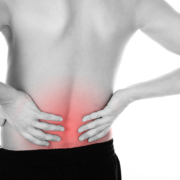Knee Surgery: Knee Acupuncture For Pain Relief
Acupuncture has been proven to be an effective modality for postoperative analgesia. Researchers at the First Hospital of Haerbin Medical University conducted a study comparing drug analgesia with electroacupuncture in patients undergoing total knee arthroplasty. The results showed that electroacupuncture led to better outcomes, including the reduction of serum prostaglandin E2 (PGE2) levels and the increase of β-endorphin levels. The researchers attributed these beneficial effects to the low-frequency pulsed current (LFPC) delivered through electroacupuncture. They concluded that electroacupuncture not only improves postoperative analgesia but also promotes rapid recovery of knee range of motion with a high safety rate.
Comparison of Pain Levels:
Visual analogue scoring system (VAS) values were analyzed to compare pain levels between the two groups. Twelve hours after surgery, the electroacupuncture group reported lower pain scores for both rest and activity pain (6.13 ± 1.27 and 6.31 ± 1.25, respectively) compared to the drug control group (6.62 ± 1.13 and 6.98 ± 1.41). This distinction in pain levels remained evident up to 120 hours after surgery.
Improvement in Knee Motion:
The electroacupuncture group also exhibited greater active and passive knee motion ranges (87.68 ± 10.43 and 97.58 ± 11.03) compared to the drug control group (75.21 ± 8.97 and 91.94 ± 9.58). On the seventh day after the operation, both groups showed a significant decrease in PGE2 levels and a significant increase in β-endorphin levels. In the drug control group, the average PGE2 level was 207.11 ± 12.17, and the β-endorphin level was 237.11 ± 12.40. In contrast, the electroacupuncture group had an average PGE2 level of 173.23 ± 11.92 and β-endorphin level of 289.23 ± 11.52.
Study Methodology:
Between March 2017 and March 2019, a total of 90 patients undergoing total knee arthroplasty (TKA) were included in the study. These patients were randomly assigned to either the drug control group or the electroacupuncture group, with 45 patients in each group. The inclusion criteria required patients to have degenerative knee osteoarthritis, undergo total knee arthroplasty on one side, and be over 50 years of age. Patients with a history of previous knee joint surgery, extreme obesity, or opioid use were excluded.
Surgical Procedure:
All patients underwent total knee arthroplasty performed by the same group of doctors using a medial parapatellar approach. The average procedure duration was 120 ± 20 minutes. A tourniquet was applied during the surgery and released after suturing the fascial layer. An electric cautery knife was used to control bleeding.
Postoperative Analgesia:
In the drug control group, an integrated analgesia method was employed. An epidural analgesia pump was used with 96 mL of 0.9% sodium chloride solution. The choice of morphine, rooperaine, flopericaine, or haloperidol was based on the patient’s age and physical condition. The administration rate was set at 2 mL/h. Additionally, 200 mg of celecoxib, an anti-inflammatory drug and oxygenase inhibitor, was prescribed on the day of surgery.
For the electroacupuncture group, electroacupuncture was administered three and five days before surgery. No painkillers were used in this group after surgery. Sterilized needles (0.25 mm × 25 mm, 0.25 mm × 40 mm) were inserted at specific acupoints, including ST34 (Liangqiu), ST36 (Zusanli), GB34 (Yanglingquan), SP10 (Xuehai), ST40 (Fenglong), and GB40 (Qiuxu). Electroacupuncture was then applied with a disperse-dense wave at a frequency of 2 Hz/100 Hz and an intensity of 2–5 mA for 30 minutes. Liangqiu and Xuehai were connected, as were Yanglingquan and Zusanli, and Fenglong and Qiuxu.
Combined Treatment Outcomes:
In a related study conducted at the First Affiliated Hospital of Guangzhou University of Traditional Chinese Medicine, researchers concluded that acupuncture, when combined with analgesic medications, improved pain relief outcomes in patients undergoing total knee arthroplasty. Patients receiving the combined treatment protocol showed superior outcomes compared to those receiving only drugs.
Conclusion:
The findings of this study support the efficacy of electroacupuncture, particularly at the ST34 (Liangqiu) acupoint, in providing postoperative analgesia and promoting rapid recovery of knee motion. Further research and clinical studies are warranted to explore the potential of acupuncture as a complementary treatment for postoperative pain management.










